
Fig. 22. Osmunda regalis, a rare fern growing at Panchmari in Madhya Pradesh
3
CONSERVATION OF NATURAL RESOURCES INCLUDING FORESTRY AND WILDLIFE
[Conservation and Management of Biosphere Reserves, Wetlands, Mangroves, Coral Reefs, Biodiversity Conservation, Biosafety Protocol, Genetic Engineering Approval Committee. All India Coordinated Project on Taxonomy, Medicinal Plants, Assistance to Botanical Garden, National Botanic Garden, Forest conservation, Regional Offices, Forest Policy, Integrated Forest Protection Scheme, Joint Forest Management, Wildlife Conservation, Animal Welfare, Statutory Bodies, Project Tiger, Project Elephant, Wildlife Institute of India, Central Zoo Authority, National Zoological Park]
Biosphere Reserves
Significant achievement of Wetland, Mangroves and Coral Reefs during the year are :
Biodiversity Conservation
National Biodiversity Strategy and Action Plan (NBSAP) Project
Legislation
Salient features of the Biodiversity Legislation
Ratification of Cartagena Protocol on Biosafety by India
The Genetic Engineering Approval Committee (Biosafety Regulatory Framework in India)
All India Coordinated Project on Taxonomy (AICOPTAX)
Medicinal Plants
Assistance to Botanical Gardens
Establishment of National Botanic Garden at Noida-Delhi
Forest Conservation
Regional Offices of the Ministry
Forest Policy
Integrated Forest Protection Scheme
Joint Forest Management (JFM)
Wildlife Conservation
Enforcement of Wildlife (Protection) Act, 1972 and Export- Import Policy
Revision of Wildlife (Protection) Act, 1972
Indian Board for Wildlife (IBWL)
Nation Wildlife Action Plan (NWAP)
Development of National Parks and Sanctuaries
Animal Welfare
Regulatory
Developmental
Various Schemes Implemented by the Animal Welfare Division
Educational
National Institute of Animal Welfare (NIAW)
Statutory Bodies
Animal Welfare Board of India (AWBI)
Committee for Purpose of Control & Supervision of Experiments on Animals (CPCSEA)
Project Tiger
Project Elephant
Wildlife Institute of India
Central Zoo Authority
Evaluation and Grant of Recognition of Zoos
Utilisation of grants-in-aid received from the Ministry
Rescue Centres
Training Courses
Workshops and Conferences
Providing technical and financial assistance to Zoos and other Institutions towards upgradation of technical know how
Publications
Website of Central Zoo Authority
National Zoological Park
Biosphere Reserves
Biosphere Reserves are areas of terrestrial and coastal ecosystems which are internationally recognized within the framework of UNESCO’s Man and Biosphere (MAB) Programme. These reserves are required to meet a minimal set of criteria and adhere to a minimal set of conditions before being admitted to the World Network of Biosphere Reserves designated by UNESCO for inclusion in the World Network of Biosphere Reserves. The world’s major ecosystem types and landscapes are represented in this Network, which is devoted to conserving biological diversity, promoting research and monitoring as well as seeking to provide models of sustainable development in the service of mankind.
These reserves are rich in biological and cultural diversity and encompass unique features of exceptionally pristine nature. The goal is to facilitate conservation of representative landscapes and their immense biological diversity and cultural heritage, foster economic and human development which is culturally and ecologically sustainable and to provide support for research, monitoring, education and information exchange. The Scheme is a pioneering effort at pursuing the increasingly difficult yet urgent task of conserving ecological diversity under mounting pressures.
The thirteen Biosphere Reserves set up in the country so far not only aim to protect representative ecosystems, but also serve as laboratories for evolving alternative models of development. The Ministry provided financial assistance to the respective State Governments for conservation and management of these Biosphere Reserves. Research and development projects were also supported. On the basis of the proposal submitted by the Ministry, the International Coordinating Council (ICC) of Man and Biosphere (MAB) Programme of UNESCO in November, 2001 approved designating the Sunderban (West Bengal) and Gulf of Mannar (Tamil Nadu) on the World Network of Biosphere Reserves. As a result, three Biosphere Reserves from India are now included on the World Network, the third being Nilgiri (Kerala, Karnataka and Tamil Nadu) which was designated during the year 2000. Efforts are on for getting other Biosphere Reserves included in the World Network of Biosphere Reserves. This facilitates international recognition and attracts additional funding in these sites. Agasthyamalai Hills in Kerala comprising an area of 1701 sq. km. has been designated as thirteenth Biosphere Reserve on 12th November, 2001. The Government of Tamil Nadu is considering inclusion of the adjoining areas in this Biosphere Reserve. The Secretariat for Global Environment Facility (GEF) have approved funding of a special project for long term conservation and sustainable utilization of the resources of the Gulf of Mannar Biosphere Reserve and the project is expected to be initiated during the current year.

The Ministry provided financial support to the respective State Governments for management interventions in the buffer zones of these biosphere reserves based on the recommendations of the Indian National MAB Committee. A number of research projects have been completed during the year which have provided baseline data helpful in the scientific management of these Reserves. A number of new research projects were also initiated during the year. The details of the research projects initiated and projects completed are given in Annexure V and VI respectively. A list of Biosphere Reserves set up so far along with their area and location is given in Table-2.
Table-2 Biosphere Reserves
Sl.No. Name of the site & Date of Notification Location (State) and Bio-geographic area in sq.km zones
1. Nilgiri(5,520) 01.08.86 Part of Wynad, Nagarhole, Bandipur and Mudumalai, Nilambur, Silent Valley and Siruvani Hills (Tamil Nadu, Kerala and Karnataka) - Western Ghats 2. Nanda Devi (5,860.69) 18.01.88 Part of Chamoli, Pithoragarh & Almora Districts (Uttranchal) - West Himalayas 3. Nokrek (820) 01.09.88 Part of Garo Hills (Meghalaya)- East Himalayas 4. Manas (2,837) 14.03.89 Part of Kokrajhar, Bongaigaon, Barpeta, Nalbari, Kamrup and Darang Districts (Assam) -East Himalayas 5. Sunderbans (9,630) 29.03.89 Part of delta of Ganges and Barahamaputra river system (West Bengal) - Gigantic Delta 6. Gulf of Mannar (10,500) 18.02.89 Indian part of Gulf of Mannar between India and Sri Lanka (Tamil Nadu) - Coasts 7. Great Nicobar (885) 06.01.89 Southern most islands of Andaman and Nicobar (A&N Islands) - Islands 8. Similipal (4,374) 21.06.94 Part of Mayurbhanj district (Orissa) - Deccan Peninsula 9. Dibru-Saikhowa (765) 28.07.97 Part of Dibrugarh and Tinsukia districts (Assam) - East Himalayas 10. Dehang Debang (5,112) 02.09.98 Part of Siang and Debang valley in Arunachal Pradesh - East Himalayas 11. Pachmarhi (4,926.28) 03.03.99 Part of Betul, Hoshangabad and Chindwara districts of Madhya Pradesh - Semi-Arid-Gujarat Rajputana 12. Kanchanjunga (2,619.92) 07.02.2000 Parts of Kanchanjunga Hills in Sikkim -East Himalayas 13. Agasthyamalai (1701) 12.11.2001 Neyyar, Peppara and Shenduruny Wildlife Sanctuaries and their adjoining areas in Kerala.
Conservation and Management of Wetlands, Mangroves and Coral Reefs
Ramsar Convention defines "Wetlands" as areas of marsh fen, peat land or water, whether artificial or natural, permanent or temporary, with the water static or flowing, brackish or salt, including marine areas, depth of which does not exceed 6 meter. As such mangroves, corals, estuaries, creeks, bays, sea grasses and lakes, etc. are covered under this definition. Taking into consideration the ecological and economic significance of wetlands, mangroves and coral reefs, as well threats these fragile ecosystems are facing due to various anthropogenic activities, Ministry launched a Scheme on Conservation and Management of Wetlands, Mangroves and Coral Reefs during 1987. The Scheme is being continued in the Tenth Five Year Plan.
Based on the recommendations of National Committees on Wetlands, Mangroves and Coral Reefs, 24 wetland, 33 mangrove and four coral reef areas in the country have been identified by the Ministry for conservation and management till date. Objectives of the scheme cover, identification of priority areas for conservation and management and preparation of guidelines for implementation of Management Action Plans for these identified areas. Activities under these action plans include survey and demarcation, protection, afforestation, natural regeneration, restoration, catchment area treatment, pollution control, weed control, wildlife conservation, sustainable fisheries development, environmental education and certain eco-development activities through peoples’ participation.
Management Action Plans for the identified wetlands, mangroves and coral reefs, are implemented by the respective State Governments/UTs. To monitor progress of implementation of these Management Action Plans, State level Steering Committees have been constituted in all the concerned States. Research activities are promoted to integrate the same with the management. Thrust areas for research have been identified and Nodal institutions identified to pursue the same. Research Sub Committees to consider such proposals are constituted for Wetlands as well as Mangroves and Coral Reefs.
Meetings of the respective National Committees and Research sub-Committees on Wetlands and Mangroves and Coral Reefs have been held to review the progress of implementation of Management Action Plans as well as research projects during the Ninth Five Year Plan and decide priorities for the Tenth Five Year Plan. Management Action Plans and Research proposals to be implemented during the current financial year have been considered during these Meetings.
Some of the significant activities during the Ninth Five Year Plan include :
Wetlands
- Reconstitution of National Committee and Research Sub-Committee for wetland conservation.
- Reconstitution of Technical Advisory Committee (TAC) on Loktak lake
- Implementation of Management Action Plans except Maharashtra and Bihar
- Preparation of a Directory of Wetlands covering 2,107 natural and 65,253 man made wetlands, occupying an area of 4.1 million hectares.
- Country-wide survey and mapping of Wetlands using Remote Sensing Technology.
- Compilation of Information on the status of 183 Wetlands of national/international importance
- Formulation of Guidelines for preparation of Management Action Plans.
- Setting up of the Wetland Authorities viz. the Loktak Development Authority in Manipur, the Chilka Development Authority in Orissa and the Lakes and Waterways Authority in Jammu and Kashmir.
- Implementation of UNDP-GEF project on conservation and sustainable use of threatened wetlands through Salim Ali Centre for Ornithology and Natural History (SACON).
- Review of implementation of Management Action Plan for conservation of Loktak lake in Manipur with 50% assistance from India-Canada Environment Facility (ICEF).
- Preparation of country report and outreach programme for the next triennium.
- Participation in Standing Committee meeting of Ramsar Convention.
- India was represented in Jury and was bestowed with Ramsar Conservation Award.
- Considering the importance of conservation of wetlands, the budget was increased from Rs. 4 crores to Rs. 16 crores in the Ninth Five Year Plan. In the Tenth Five Year Plan, it has been further increased to Rs. 30 crores.
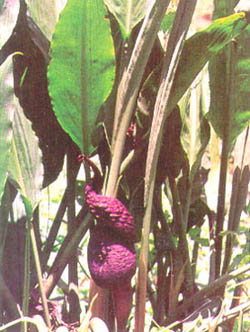
Mangroves
- Reconsitution of National Committee and Research Sub-Committee on Mangroves and Coral Reefs.
- Implementation of Management Action Plans for all the identified Mangrove and Coral Reef areas (except Kerala and Pondicherry).
- As per the State of Forest Report 1999, the mangrove forest coverage in the country is 4,871 sq.km. It has shown significant increase by 615 sq.km. during 1991-99 and an increase of 338 sq.km. during 1995-99.
- Identification of Mangroves as one of the Thrust areas for priority action leading to identification of 18 additional mangrove areas in the country for conservation and management and resulting in enhancement of the budget from Rs.4.5 crore to Rs. 15 crore during the Ninth Five Year Plan.
- Preparation of a draft National Action Plan and strategy for implementation.
- Constitution of a Task Force to assess the damage caused to the coastal areas in Orissa and the significant role played by mangroves in protecting the lives and property during the Super Cyclone in the State.
- Establishment of a Mangrove Genetic Resource Centre in Kalibhanjdia (Bhitarkanika), Orissa.
- Establishment of a Data Base Network and Web Site on Mangroves.
- Implementation of Projects on Mangroves on East and West coast with financial assistance from India-Canada Environment Facility (ICEF).
Coral Reefs
- Establishment of Indian Coral Reefs Monitoring Network (ICRMN) for effective implementation of Management Action Plans on identified coral reef areas, training and capacity building in taxonomy, bio-physical methods and scuba diving so as to monitor health of coral reefs and promotion of research on identified thrust areas.
- Establishment of Database Network and Website on Coral Reefs.
- Establishment of National Coral Reef Research Centre at Port Blair.
- Inclusion of Corals in Schedule I of the Wild Life Protection Act, 1972.
- Establishment of National Focal Points of Global Coral Reef Monitoring Network (GCRMN), International Coral Reef Initiative (ICRI) and Coral Reef Degradation in Indian Ocean (CORDIO) in the Ministry.
- Implementation of UNDP-PDF-B Project on Management of Coral Reefs in Andamans.
- Implementation of India-Australia Training and Capacity Building (IATCB) Project on Coral Reefs. Two scientists from Zoological Survey of India, Marine Biological Station have been trained in Coral Reef Taxonomy at Queensland Museum of Natural History in Australia. A delegation of policy makers, managers and scientists visited various research institutes including Great Barrier Reef Management Authority (GBRMA). A training programme for middle level managers was also organized in Australia.
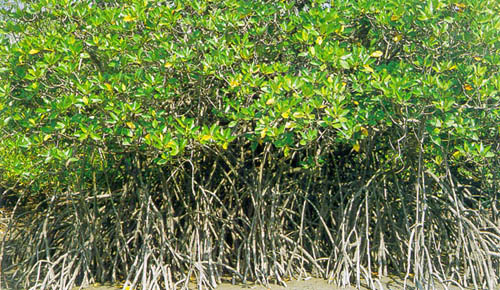
Significant achievement of Wetland, Mangroves and Coral Reefs during the year are :
- Management Action Plans for all the identified wetlands are in various stages of implementation except Maharashtra and Bihar.
- Financial assistance increased from Rs.40 crores to Rs.50 crores.
- Assistance released for conservation of Wetlands to following States during the current financial year:-
- Punjab (Ropar and Kanjli), Jammu & Kashmir (Wullar and Tso Morari), Himachal Pradesh (Chandertal and Pong), Orissa (Chilka), Manipur (Loktak) and Gujarat (Nalsarovar).
- Four new wetlands have been added to the national list on recommendations of the Committee. New wetlands are : Hokersar, Mansar-Surinsar, Pangong Tsar from Jammu & Kashmir and East Kolkatta from West Bengal.
- Two more proposals received from Mizoram and Sikkim for their inclusion in the national list are being processed.
- Three more research proposals were approved for assistance during this year.
- Thirteen new sites from India declared as Ramsar sites of international importance in addition to existing six sites. Six sites are in the process of being designated as Ramsar sites and six more are being processed. This fulfills our commitment made in CoP7 meeting held in Costa Rica in May, 1999 where India committed to declare 25 new Ramsar sites during the present triennium.
- Ramsar Conservation Award was bagged by India for ecological interventions in Chilka Lake through opening of Maggarmukh mouth in consultation with communities which yielded fruitful results in terms of higher income, higher fish yield, control of weeds and re-appearance of some prawn species which had earlier disappeared. This award was given to Chilka Development Authority and was received by Chief Executive of Chilka Development Authority in Valencia on 18th November, 2002.
- Implementation of sound management practices undertaken by Government of India made Chilka lake to come out of Montreaux Record. This recommendation was given after visit of international mission to Chilka in December, 2001.
- India was elected as a member of the Finance Committee for the next triennium viz., 2002-2005
- India was nominated in the Scientific and Technical Review Panel (STRP). These nominations will be finalized during the Standing Committee Meeting to be held in February, 2003.
- In the side event organized by Wetland International and chaired by India, a presentation on Chilka lake was made where management interventions through community participation was highlighted. This event was attended by number of countries apart from President of Wetland International, Dr. Max Finlyson.
- In collaboration with WWF-India, in one of the side events chaired by India, 19 fact sheets on identified Ramsar sites were released and highly appreciated by the participatory countries. India proposes to make monographs of all these sites in the near future.
- India co-chaired a session on agriculture and wetlands and the draft resolution pertaining to this aspect was endorsed by the Conference of Parties. India was also associated right from its inception in Community Education and Participatory Awareness (CEPA) programme and in drafting the resolution. Number of meetings were attended by India from time to time to finalise that document in collaboration with other countries. India also co-sponsored this resolution which was adopted without any opposition from any contracting parties.
- The report on World Commission on Dams was not approved by the Water Resource Ministry and reservations were also expressed by the Ministry of External Affairs for its approval. India convened a number of meetings with countries like Turkey, Nepal, China, Pakistan and Brazil and convened contracting parties to accept India’s viewpoint in the amended resolution. Most of the points raised by the Group were considered.
- The Scheme on Conservation and Management of Mangroves and Coral Reefs has been merged with Wetlands on the recommendations of the Planning Commission .
- Progress of implementation of Management Action Plans on all the identified Mangrove areas during the 9th Five Year Plan was reviewed and priority actions for the Tenth Five Year Plan were discussed by the National Committee on Mangroves and Coral Reefs during its Meeting held on 23rd May, 2002.
- Draft National Action Plan on Mangroves and Strategy for its implementation was discussed during the Meeting of the National Committee.
- Management Action Plans for all the identified Mangrove areas (except Maharashtra, Kerala and Pondicherry) were considered by the National Committee and financial assistance extended to the following States/UTs for implementation of Management Action Plans for the respective Mangrove areas during 2002-03.
- West Bengal : Sunderbans
- Orissa : Bhitarkanika, Mahanadi, Devi, Subernrekha and Chilka
- Andhra Pradesh : Coringa, East Godavari and Krishna
- Tamil Nadu : Pitchavaram, Muthupet and Ramnad
- A & N Islands : North Andamans and Nicobar
- Karnataka : Coondapur and Honnavar
- Goa : Goa
- Gujarat : Gulf of Kutch and Gulf of Khambat
- On recommendations of the National Committee following additional Mangrove areas in the respective States have been identified for conservation and management.
- Orissa : Chilka
- Tamil Nadu : Pulicat
- Karnataka : Karwar
- Progress of implementation of activities of the National Mangrove Genetic Resource Centre in Orissa was reviewed and the State Government was advised to identify suitable activities along with institutional mechanism for implementation of the same during the Tenth Five Year Plan.
- Database Network and Website on Mangroves were updated and protocols for sharing of information at local, regional and global level have been discussed.
- Bhitarkanika and Chilka Mangrove areas in Orissa have been designated as Ramsar Sites of international importance
- Sunderbans in West Bengal has been included in the World List of Biosphere Reserves by UNESCO. It has also been identified as the priority area for conservation by the Conservation International.
- Progress of implementation of ICEF Project Coastal Wetlands on East Coast, being implemented by Dr. M. S. Swaminathan Research Foundation, Chennai was reviewed and a project on Mangroves in Gujarat with financial assistance from India-Canada Environment Facility (ICEF) being implemented by Gujarat Ecology Commission has been launched.
- Research Sub Committee on Mangroves and Coral Reefs reviewed progress of implementation of ongoing Research Projects during its Meeting. List of three new Research Projects recommended by the Committee is given at Annexure V.
- On the recommendations of the National Committee on Mangroves and Coral Reefs following coral reef areas in the country have been identified for intensive conservation and management since 1987:
- Andaman & Nicobar Islands
- Lakshdeep Islands
- Gulf of Kutch (Gujarat)
- Gulf of Mannar (Tamil Nadu)
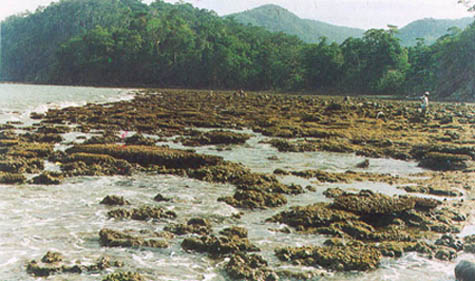
- Progress of implementation of Management Action Plans on all the identified Coral Reef areas was reviewed by the National Committee and financial assistance was extended to the respective States/UTs for implementation of Management of Action Plans during the year.
- Progress of implementation of activities of the National Coral Reef Research Centre in Port Blair was reviewed and grants received for strengthening infrastructure of this Centre leading to biophysical monitoring of health of Coral Reefs.
- Database Network and Website of Indian Coral Reef Monitoring Network (ICRMN) were updated and protocols for sharing of data have been finalized. Database CDs on all the identified Coral Reef areas as per the protocols of GCRMN have been prepared and are being launched on the Website of ICRMN for wider dissemination.
- Planning and Coordination Meeting and Review Workshop of Global Coral Reef Monitoring Network (GCRMN) was organized at National Institute of Oceanography (NIO), Goa and area specific Strategies and Monitoring Action Plans for all the identified Coral reef areas in the country have been discussed. Draft document on National Action Plan on Conservation and Management of Coral Reefs and Strategy for its implementation has been prepared.
- Project on Regeneration of Coral Reefs in Gulf of Mannar was launched with financial assistance from Coral Reef Degradation in Indian Ocean (CORDIO). DFID-RLA completed Pilot studies on Reef Livelihood Alternatives in Andamans, Lakshdweep and Gulf of Mannar (Tamil Nadu).
- Gulf of Mannar Coral Reef area in Tamil Nadu was included in the World List of Biosphere Reserves by UNESCO.
- Final Workshop of UNDP/GEF PDFB Project on Management of Coral Reefs in Andamans was organized in Port Blair to discuss the Project Brief for next phase of this project.
- Under India-Australia Training and Capacity Building project on Coral Reefs a delegation of Scientists, policymakers and senior level managers visited various institutes including Great Barrier Reef area in Australia. Similarly a team of middle level managers and scientists from relevant academic institutions in India underwent a Training on Marine Protected Area Management in Australia. Two scientists from Zoological Survey of India, Marine Biological Station completed a Training in Taxonomy of Coral Reefs in Queensland Museum in Australia.
- Training Programmes on Biophysical and Socio-economic Monitoring of Coral Reefs for middle level Managers in India were organized at GEER Foundation, Ahmedabad and Port Blair.
- Research sub Committee on Mangroves and Coral Reefs reviewed progress of ongoing research projects on Coral reefs and recommended four new research projects during the current financial year as given in Annexure V.
‘Biodiversity’ is defined as the variability among living organisms and the ecological complexes of which they are part, including diversity within and between species and ecosystems. Biodiversity manifests at species, genetic and ecosystem levels.
Biological diversity has direct consumptive value in food, agriculture, medicine, industry. It also has aesthetic and recreational value. Biodiversity maintains ecological balance and continues evolutionary processes. The indirect ecosystem services provided through biodiversity are photosynthesis, pollination, transpiration, chemical cycling, nutrient, cycling, soil maintenance, climate regulation, air, water system management, waste treatment and pest control.
India is one of the 12 mega biodiversity countries of the world. From about 70% of the total geographical area surveyed so far, 46,000 plant species and 81,000 animal species have been described.

India became a Party to the International Convention on Biological Diversity in May 1994. The three objectives of the Convention are (i) conservation of biological diversity (ii) sustainable use of components of biological diversity and (iii) fair and equitable sharing of benefits arising out of utilization of genetic resources.
The scheme on Biodiversity Conservation was initiated during 1991-92 to ensure coordination among various agencies dealing with issues relating to conservation of biodiversity and to review, monitor and evolve adequate policy instruments for the same.
Pursuant to India’s ratification of the Convention on Biological Diversity (CBD) on 18th February, 1994, steps have been initiated to meet the commitments/opportunities offered by it. The main implementation measures for the CBD are through national strategies, legislation and administrative instruments to be developed in accordance with each country’s particular conditions and capabilities.
Activities undertaken under this scheme are:
National Biodiversity Strategy and Action Plan (NBSAP) Project
Adopting a consultative process with the stakeholders, a National Policy and Action Strategy on Biological Diversity was drawn up as a macro-level statement of strategies, gaps and further actions needed for conservation, sustainable use and strategies and realization of actual and potential value of biological diversity. Emphasizing the need for conservation and analyzing provisions of the Convention, this macro-level policy identified the basic goals and thrust areas and outlines action points for conservation and management of biodiversity.
In order to prepare detailed microlevel action plans at state and regional levels based on the framework document, the Ministry has accessed funds from the Global Environment Facility for the National Biodiversity Strategy and Action Plan (NBSAP) project. The NBSAP project envisages assessment and stocktaking of biodiversity-related information at state level including distribution of endemic and endangered species and site specific threats and pressures. Key features of this project include an emphasis on decentralized state level planning, and the use of interdisciplinary working groups to involve all sectors concerned with biodiversity conservation. In all 69 Executing agencies are presently preparing action plans at four levels : local, state, ecoregional and thematic, which will be consolidated and developed into a national level action plan. NBSAP is India’s largest development and planning exercise on environment, based on a highly participatory approach. All the 69 plans are under finalization. The Technical and Policy Core Group has prepared the first draft of the National Plan and the same has been sent to executive agencies of State Action Plans, State Governments, experts, academic institutions etc. for comments.
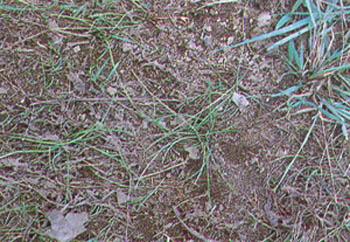
A final National Workshop under NBSAP was organized in December 2002, to discuss the respective SAPs and the first draft of the National Plan and sharing of experience. About 250 participants 65 executing agencies participated in the workshop.
Further information on NBSAP project can be accessed through the website: http://sdnp.delhi.nic.in/nbsap
India’s richness in biological resources and indigenous knowledge relating to them is well recognized. One of the major challenges is in adopting an instrument which helps realise the objectives of equitable benefit sharing enshrined in the Convention. Towards this, a legislation on biodiversity was developed following an extensive consultative process. The legislation aims at regulating access to biological resources so as to ensure equitable sharing of benefits arising from their use. The Biological Diversity Bill, which was introduced in the Parliament on 15th May, 2000, was referred to the Department related Parliamentary Standing Committee for Science, Technology, Environment & Forests for examination and report.
After examination of witness and recording evidences, the Committee approved the Bill with some amendments. The Cabinet approved the proposal for moving the official amendments based upon the recommendations of the Committee. The Biological Diversity Bill has been passed by the Lok Sabha on 2nd December and by the Rajya Sabha on 11th December, 2002.

Salient features of the Biodiversity Legislation
The main intent of the legislation is to protect India’s rich biodiversity and associated knowledge against their use by foreign individuals and organizations without sharing the benefits arising out of such use, and check biopiracy. The Act provides for setting up of a National Biodiversity Authority (NBA), State Biodiversity Boards (SBBs) and Biodiversity Management Committees (BMCs) in local bodies. NBA and SBB are required to consult BMCs in decisions relating to use of biological resources/related knowledge within their jurisdiction and BMCs are to promote conservation, sustainable use and documentation of biodiversity.
All foreign nationals/organizations require prior approval of NBA for obtaining biological resources and/or associated knowledge for any use. Indian individuals/entities require approval of NBA for transferring results of research with respect to any biological resources to foreign nationals/organizations for commercial purpose. Collaborative research projects, and exchange of knowledge and resources under these projects are exempted provided they are drawn as per the policy guidelines of the Central Government and have its approval.
Indian industry is required to give prior intimation to the concerned SBB about obtaining any biological resource for commercial use, and the SBB may restrict the activity if found to violate the objectives of conservation, sustainable use and benefit sharing. However Indian citizens/entities/local people including vaids and hakims to have free access to use biological resources within the country for their own use, medicinal purposes and research purposes. While granting approvals, NBA will impose terms and conditions to secure equitable sharing of benefits. Before applying for any form of IPRs in or outside India for an invention based on research or information on a biological resource obtained from India, prior approval of NBA will be required. There is an enabling provision for setting up a framework for protecting traditional knowledge. The monetary benefits, fees, royalties as a result of approvals by NBA to be deposited in National Biodiversity Fund which will be used for conservation and development of areas from where resource has been accessed, in consultation with the local self government concerned.
Provision for notifying Heritage Sites important from standpoint of biodiversity, by State Governments in consultation with local self government. Provision for notifying items, areas for exemption provided such exclusion does not violates other provisions. This is to exempt normally traded commodities so as not to adversely affect trade.
Ratification of Cartagena Protocol on Biosafety by India
The Cartagena Protocol on Biosafety, the first international regulatory framework for safe transfer, handling and use of Living Modified Organisms (LMOs) was negotiated under the aegis of the Convention on the Convention on Biological Diversity.
The protocol offers a number of tools for promoting biosafety. It incorporates the use of Precautionary Principle, the application of Advance Informed Agreement, procedure for import of LMOs, Risk Assessment and Risk Management Framework, Capacity Building, public awareness and exchange of scientific and technical information on LMO’s through a Biosafety Clearing House Mechanism.
The protocol was adopted on 29th January 2000. The protocol has been signed by 103 countries (except USA). The Cabinet (GOI) approved the proposal and India signed the Biosafety Protocol on 23rd January 2001. The Cabinet has approved the ratification of the protocol on 5th September, 2002. The instrument for ratification has been deposited in the UN depositary. India is now a party to the protocol. So far 43 countries have ratified the protocol. The protocol will come into force on the 90th day after the date of deposit of the fiftieth instrument of ratification by countries that are Parties to the Convention.
The Genetic Engineering Approval Committee (Biosafety Regulatory Framework in India)
The biosafety regulatory framework in India consists of the Rules for the Manufacture, Use, Import, Export and Storage of Hazardous Microorganisms/Genetically Engineered Organisms or Cells 1989 issued by the Ministry of Environment and Forests under the Environment (Protection) Act, 1986, and the guidelines issued by the Department of Biotechnology. As per these Rules, Review Committee on Genetic Manipulation (RCGM) established under the Department of Biotechnology supervises research activities including small scale field trials. Approvals for large scale releases and commercialization of GMOs are given by the Genetic Engineering Approval Committee (GEAC), established under the Ministry of Environment and Forests. In addition to these two committees under the Government of India, the 1989 Rules provide for establishing State Biotechnology Coordination Committees and District level committees for monitoring. The Rules also mandate that every institution engaged in GMO research establish an Institutional Biosafety Committee to oversee such research and to interface with the RCGM in regulating it.
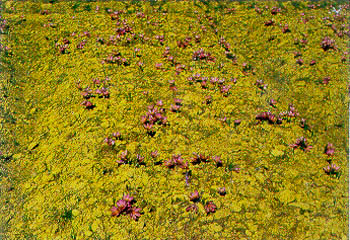

The Genetic Engineering Approval Committee (GEAC) set up under Rule 4 of the Rules for Manufacture, Use, Import, Export and Storage of Hazardous Microorganisms/Genetically Engineered Organisms or Cells, 1989 notified under the Environment (Protection) Act, 1986 accorded approval for commercial release of three Bt cotton varieties developed by Maharashtra Hybrid Seed Company (MAHYCO). The three approved hybrid varieties (Bt MECH-162, Bt MECH-184, Bt. MECH-12) are presently under cultivation only in six states namely Maharashtra, Gujarat, Madhya Pradesh, Karnataka, Andhra Pradesh and Tamil Nadu.
Bt cotton is the first and only transgenic crop approved by the GEAC for commercial cultivation.
All India Coordinated Project on Taxonomy (AICOPTAX)
A sound taxonomic knowledge base is a prerequisite for environmental assessment, ecological research, effective conservation, management and sustainable use of biological resources. However, it has been continuously felt that the taxonomic expertise in the country has been aging and declining in number. This has been happening when the need for a taxonomic stocktaking of the biodiversity is becoming increasingly important. In order to address this issue, the Ministry launched an All India Coordinated Project on Taxonomy (AICOPTAX) during 1999-2000.
The Sixth meeting of the Steering Committee of AICOPTAX was held on February, 2002. During the meeting it was decided that the Coordinating Units and Collaborating Units for Algae will be made effective. One Collaborating Unit for Pteridophytes and Gymnosperms was approved at the University Department of Botany, Punjab University in place of State Forest Research Institute, Itanagar. Also, it was decided that the proposed Chairs on Taxonomy will be offered soon. The Committee decided that each Chair will carry honorarium and suitable annual grant to facilitate travel and other expenses on the lines of Pitamber Pant Fellowship.
Medicinal Plants are identified as one of the thrust areas by the Ministry. The existing programmes encompassing activities in the area of medicinal plants have been continued to carry out conservation of medicinal plants found in the forest and protected areas and also cultivation of medicinal plants in the degraded forest areas.
In-situ
and Ex-situ Conservation of Medicinal Plants- In the Southern States of Kerala, Tamil Nadu and Karnataka Medicinal Plants Conservation Areas (MPCAs) and Medicinal Plants Conservation Networks (MPCN) established for in-situ conservation under the DANIDA funded programme have continued their activities. Foundation for Revitalization of Local Health Traditions (FRLHT) and the State Forest Departments are involved in these efforts. The Steering Committee for the programme held its meetings in April, 2002 to take stock of the progress. The Steering Committee noted with satisfaction that the programme has made expected progress.
- UNDP CCF-I assisted sub-programme on Medicinal Plants is being executed in the states of Andhra Pradesh and Maharashtra. MPCAs (13 in Maharashtra and eight in Andhra Pradesh) which were established in the forest areas are functioning properly. Monitoring Committee for the programme met on 2.1.2002 at Mumbai and evaluated the progress made. The progress was satisfactory and encouraging.
Sacred Groves
- A project for conservation and protection of sacred groves is being implemented in the State of Tamil Nadu. The project is being implemented through the involvement of CPR Environmental Education Centre, Chennai. The project is aimed at raising level of awareness regarding the importance and value of sacred groves through various community activities.
Assistance to Botanical Gardens
The scheme on assistance to Botanical Gardens and Centres for ex-situ conservation was initiated in 1992 to augment ex-situ conservation of rare endemic plants. One time financial assistance is provided to the existing botanical gardens for improvement of their infrastructural facilities to augment ex-situ conservation of rare endemic plants. The achievements made in these Botanic Gardens are periodically monitored with the help of Botanical Survey of India and regional offices of the Ministry.
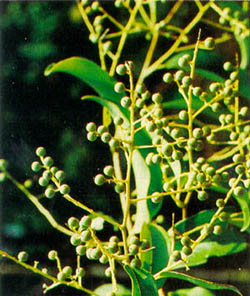
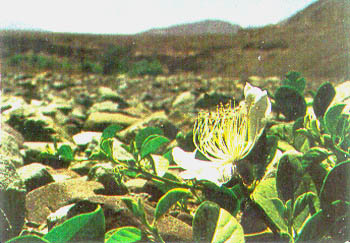
The Ministry has constituted an Expert Group to identify and recommend proposals received under the scheme. The Botanical Survey of India helps in identification of rare endemic plants requiring ex-situ conservation. During the year, following institutions were provided financial support for improvement of infrastructure facility in their Botanical Garden :
- St. Anthonys College, Shillong, Meghalaya
- Sankar Tirth, AJOL, Ta:MANSA District; Gandhinagar, North Gujarat
- Udai Pratap Autonomous College, Varanasi
- Forest Department Tepania, Udaipur, South Tripura.
- Nagaland Empowerment of people Economic Development (NEPED), Nagaland.
- Post Graduate College, Noida, Gautambudh Nagar
- Meerut College, Meerut.
Establishment of National Botanic Garden at Noida-Delhi
A National Botanic Garden at Noida- Delhi was earlier decided to be set up by the Ministry to facilitate ex-situ conservation and propagation of threatened/endangered plants of the country to serve as a ‘centre of excellence’ for research and training, to cater to the conservation needs of the endangered species in the region and to build public awareness on the conservation needs through education on conservation of plant diversity. The scheme has been identified as a "Green Channel" project under the National Jai Vigyan Science & Technology Mission of the Ministry of Science & Technology for expeditious processing. The rationale for development of a Botanic Garden at NOIDA- Delhi stems from the urgent need for a conservation-oriented garden in the country. Setting up of the National Botanic Garden at NOIDA-Delhi aims at consolidating India’s plant conservation efforts in a major way as well as help India to fulfill its obligations as signatory to the Convention on Biological Diversity (June, 1992).
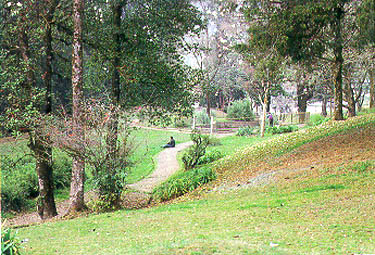
The project with an outlay of Rs. 3777.85 lakhs, has been approved for implementation in the Tenth Five-Year period in its EFC meeting held on 17.1.2002. The National Botanic Garden will now be set up as part of the Botanical Survey of India, an organization of the Ministry. The NOIDA would contribute by way of deploying ministerial staff and other logistical support.
Till November 2002, the Ministry received 133 proposals (forest land involved more than 20ha) from the States/Union Territories for getting approval under the Forest (Conservation) Act 1980 for diversion of forest land for non-forestry purpose. The status of these proposals are as under :-
|
I |
Number of Proposals Received |
30 |
|
|
a) |
Finally Approved: |
07 |
|
|
b) |
Stage – I Approved: |
23 |
|
|
c) |
Rejected |
0 |
|
II Closed for non furnishing of information
by States/UT’s 0
III Proposal returned to/withdrawn by
the State Governments 0
IV Proposal under process in the Ministry 40
V Number of proposals pending with
State Governments for want of
additional information 63
In addition to the disposal of above proposals received during the year, the number of decisions issued during the year 2002, including those of previous years are as follows :
|
I |
State II approval |
: |
56 |
|
II |
State I approval |
: |
85 |
|
III |
Rejected |
: |
19 |
|
: |
160 |
Regional Offices of the Ministry
The primary functions of the Regional Offices of the Ministry are to monitor and evaluate the ongoing forestry projects and schemes with specific emphasis on conservation of forests and follow up action on the implementation of conditions and safeguards laid down by the Ministry while granting clearance to development projects under FCA/E(P)A. The Regional Chief Conservator of Forests are empowered to decide cases for diversion of forest land for non-forestry purposes upto the extent of five ha except mining and regularization of encroachment.
The Ministry has six Regional Offices located at Bangalore, Bhopal, Bhubaneswar, Lucknow, Shillong and Chandigarh with its headquarter in the Ministry at New Delhi. The Seventh Regional Office at Ranchi could not be made functional due to financial constraint. Details of the Regional Offices and their jurisdictions are given in Annexure-II.
Region-wise target and achievement of monitoring of approved projects under the Forest Conservation Act, 1980 and EPA 1986 for the year are given in Table-3.
Table-3 Statement Showing Region-wise Physical/Financial Targets and Achievements for Monitoring of Approved Project Under FCA 1980 and EPA 1986 for the Year 2002-2003
Regional Physical Financial Offices FCA (No. of Cases) EPA(No. of Cases) Site No.of Cases Target Achievement Target Achivement Target Achievement Inspection approved (Rs. In Lakhs) Under FCA up to 20 ha
Bangalore 190 159 75 157 24 52 67.30 41.78 Bhopal 160 113 75 97 33 223 70.30 40.00 Bhubaneswar 200 88 85 82 11 9 71.30 46.51 Lucknow 175 85 90 47 4 261 71.50 41.95 Shillong 130 11 40 32 28 39 64.60 36.00 Chandigarh 95 65 35 31 -- 123 49.50 32.33 RC (HQ) Administrative/ Coordinating unit in the Ministry 105.50 65.00
Total 950 521 400 446 100 707 500.00 303.57
Ministry has notified Forest (Conservation) Rules, 2003 to supersede the rules made in 1981. The special features of the new rules are simplified format for application for forestry clearance, further simplified format for cases of renewal, fixation of time limit of 90 days at the level of State Government and 60 days at the level of Central Government for taking a decision and empowerment of regional officers to process the cases of forest land upto 40 ha. from the earlier limit of 20 ha.
The Forest Policy Division provides policy support in respect of forestry matters, and reviews the forest policy and also its relation to policies of other relevant sectors. Various legal issues viz., the State/Central Bills related with the forestry matters which are required to receive the assent of the President of India are examined by it. The Division also carries out several studies on current issues of national importance in forestry sector. Some of the findings of such studies that have been carried out recently are as follows:
Contribution of forestry sector to Gross Domestic Product (GDP) in India
A study has been carried out by the Institute of Economic Growth, Delhi on the contribution of forestry sector to GDP in India. As per the study report the gross value of goods and services provided by the forestry sector is estimated at Rs.26,329.8 crores, with the range varying from a minimum of Rs.19,846.35 crores to a maximum of Rs. 47,841.69 crores. Net of repairs, maintenance and other operational costs, the gross domestic product from the forestry sector comes to Rs.23,003.43 crores with the range being from Rs.16,519.98 crores to Rs 44,515.32 cores. As a percentage of GDP at market prices, the forestry sector now contributes 2.37% (1996-97 GDP at 1993-94 prices) instead of 1.2% as indicated by the CSO. If one were to go by the lower range of values, the contribution would be 1.7%. The higher range would yield a corresponding figure of 4.58%.

North East Forest Policy
In pursuance of the recommendation of Shukla Commission which was set up by the Planning Commission to examine the backlog in basic minimum services and gaps in infrastructure sectors for the development in the North East, the North East Forest Policy Committee was constituted in November, 1998 under the chairmanship of Shri S.C. Dey to suggest a suitable Forest Policy for the North East within the framework of National Forest Policy, 1988. Some of the modifications/changes that have been recommended to the North East region are as follows:
- Increased focuses on weaning away the people from Jhum cultivation area.
- Conservation of natural heritage, genepool and biodiversity and maintenance of environmental stability through preservation and soil and moisture conservation specifically on steep slopes, river catchment and eco-fragile areas.
- Encourage efficient utilization of forest produce and maximum value addition and
- Survey and demarcation and preparation of working plans/working schemes for all forests for sustainable and scientific management.
Amendment to Indian Forest Act, 1927
As forestry has undergone many conceptual changes since the adoption of Indian Forest Act, 1927, it was decided to bring suitable amendments to this Act. After receiving the comments and suggestions on the proposed amendments from various organizations and NGOs the final draft is now under preparation for placing it before the Cabinet for approval.
Integrated Forest Protection Scheme
Integrated Forest Protection Scheme has been formulated by the merger of the schemes of the 9th Five Year Plan ‘Forest Fire Control and Management’ and ‘Bridging of Infrastructure Gaps in the Forestry Sector in the North Eastern Region and Sikkim. The later scheme is now being extended to all the States and UTs during the 10th Five Year Plan. It is a 100% centrally sponsored scheme. The main components of the scheme are :
- Infrastructure Development
- Working Plan Preparation/Survey and Demarcation
- Strengthening of Infrastructure for Forest Protection.
- Forest Fire Control and Management
Both the components of the Scheme will be implemented in all the States and Union Territories
The Central Sector Component of Forest Fire Control and Management will be implemented by the Forest Protection Division of the Ministry and by the Forest Survey of India, Dehradun and other Central Institutions like Indian Council of Forestry Research and Education, Dehradun, Indian Institute of Forest Management, Bhopal, National Centre for Medium Range Weather Forecasting.
The state Sector Component of the scheme will be implemented by the Forest Departments/Forest Corporations of the concern State Governments and UTs.
The 10th Plan outlay for the Scheme is Rs. 445 crore. The allocation for 2002-2003 is Rs. 65 crore of which Rs. 33 crore is earmarked for the North Eastern Sector. The Expenditure Finance Committee has approved the implementation of the scheme. Funds have already been released for the ongoing components of the scheme. Funds release with respect to the components of infrastructure development for forest protection and working plan preparation to states other than North East will be made only after the approval of the Cabinet Committee on Economic Affairs.
The National Forest Policy, 1988 envisages people’s involvement in the development and protection of degraded forests as a permanent resource base to fulfill the requirements of fuel wood, fodder and small timber to local communities as well as to develop the forests for improving the environment. In order to implement the policy prescription, the Ministry issued guidelines on June 1990 to involve the village communities in the development and protection of degraded forests on the basis of their taking a share from the usufruct from such areas. The concept of the Joint Forest Management (JFM) was accordingly initiated by the developing appropriate mechanisms.
So far, 27 States have issued resolution for JFM. As on 1.12.2002, 14.26 million ha. of forest lands in the country are being managed and protected by around 64,000 Committees. The activities under JFM programme are monitored by JFM Cell of the Ministry. The Ministry reviewed this programme after wider consultation with all the stakeholders and issued further guidelines to States for strengthening the programme. The guidelines inter-alia include providing legal backup to the JFM Committees, extension of JFM to good forest areas with sharper focus on activities concentrated on Non-Timber Forest Produce (NTFP) Management, increased participation of women, establishing conflict resolution mechanisms, integration of micro plan with the working plans, contribution for regeneration of resources, monitoring and evaluation. In order to monitor the programme properly, a format for monitoring of the JFM has been prepared and circulated to all the States. JFM Nodal officers have been appointed in all the States for better coordination of the JFM work.
A Committee was also constituted by the Ministry for preparing a JFM Scheme for the 10th Five Year Plan in order to ensure long term success. The scheme will be implemented though Forest Development Agencies (FDAs).
A JFM network is also operational under the Chairmanship of Director General of Forests and Special Secretary, Ministry of Environment and Forests. To get the views and feedback from all the stakeholders, a forum has been set up by the stakeholders to provide a channel of information for the network. The forum is run by the NGOs and provides feedback to this Ministry in this regard.
Various activities relating to wild life conservation and implementation of the Wild Life (Protection) Act, 1972 were carried out by the Ministry during the year. The details are as follows:
Enforcement of Wildlife (Protection) Act, 1972 and Export- Import Policy
The Wildlife (Protection) Act, 1972, the provisions of the Convention on International Trade in Endangered Species (CITES) and Export and import Policy of India were continued to be enforced through the offices of the Regional Deputy Directors of Wildlife Preservation located at Delhi, Mumbai, Kolkata and Chennai with the help of State Wildlife Department, the State Police Departments, the Customs Departments, BSF and Coastguards. The Regional Dy. Directors detected several cases of poaching of illegal trade in wildlife products during the year.
During the year, ban on export of 29 species of plant, plant portions and their derivatives obtained from wild were continued. Export of six species of exotic birds was continued, subject to pre shipment inspection and CITES permit wherever required.
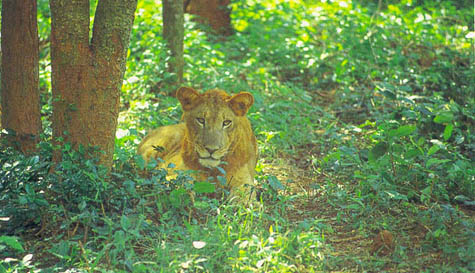
Revision of Wildlife (Protection) Act, 1972
The Wild Life (Protection) Amendment Bill, 2002 was passed by the Parliament during the Winter Session of the Parliament, 2002. The Bill proposes to enhance penalties for violation of the provisions of the Act. It also proposes to create two new categories of Protected Areas, viz., ‘Conservation Reserve’ and ‘Community Reserve’.
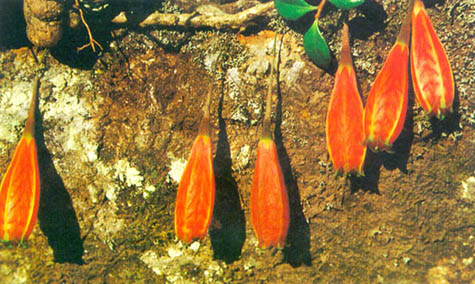
Recently, the status of the following species has been reported as endangered and hence the species were provided highest protection by including them in the Schedule I and part II of Schedule II of the Wild Life (Protection) Act, 1972.
- Wroughton’s free tailed bat (Otomops wroughtoni) - Schedule I
- Salim Ali’s fruit bat (Latidens salimalii) - Schedule I
- Swiftlets (Collocalia unicolor & Collocalia fusiphaga) - Schedule I
- Hill Myna (4 species) - Schedule I
- Tibetan ear pheasant (Crossoptilon harmani) - Schedule I
- Kalij pheasant (Lophura leucomelana) - Schedule I
- Lord Derby’s parakeet (Psittacula derbyana) - Schedule I
- Vultures (3 species) - Schedule I
- White bellied heron (Ardea insignis) - Schedule I
- Mongooses (All species of genus Herpestes) - Part II of Schedule II
- Grey Jungle Fowl (Gallus sonnerati) - Part II of Schedule II

Indian Board for Wildlife (IBWL)
The IBWL is the apex advisory body in the field of Wildlife Conservation in the country and is headed by the Honorable Prime Minister of India. The IBWL was last reconstituted on 7.12.2001. The XXI meeting of the IBWL was held on 21.1.2002 under the Chairmanship of the Honorable Prime Minister of India at New Delhi. The Standing Committee of the Board has since met thrice on 26.2.2002, 12.7.2002 and on 8.11.2002 to discuss the important aspects relating to wild life.
Nation Wildlife Action Plan (NWAP)
The first National Wildlife Action Plan (NWAP) of 1983 has been revised and the new Wildlife Action Plan (2002-2016) has been adopted. The plan outlines the strategies, action points and the priority projects for conservation of wild fauna and flora in the country. In order to monitor the implementation of the National Wild Life Action Plan (2002-2016), a Monitoring Committee has been set up under the chairmanship of Addl. DGF(WL). The first meeting of the said committee was be convened on 16.1.2003.
Development of National Parks and Sanctuaries
There are 89 National Parks and 500 Wildlife Sanctuaries in the country covering an area of 1.5664 lakhs sq.kms. During the year, financial assistance for Development of National Parks and Sanctuaries has been provided to 210 National Parks and Sanctuaries in 25 States including North-Eastern States and three UTs. During the year, Rs. 31.64 crores have been released so far. Under this scheme 100% Central Assistance is provided for non-recurring item of expenditure for National Parks and Sanctuaries, both; 50% assistance is also provided for recurring items of expenditure in case of National Parks. Further, Protected Areas in mountains, deserts and coastal regions supporting large population of endangered species like Snow leopard, Red Panda, Rhino, Sangai deer, Pharys’ leaf monkey, Musk Deer, Hangul, Great Indian Bustard, Chinkara and Black buck, are eligible for 100% Central assistance for both, recurring and non-recurring item of expenditure.
The Animal Welfare Division became a part of Ministry of Environment and Forests in the month of July 2002. Earlier the Division was under Ministry of Statistics and Programme Implementation. The mandate of Animal Welfare Division is to prevent the infliction of unnecessary pain or suffering on animals. To accomplish this mission three-pronged approach is being adopted by the Division :
The main task of the Division is to implement effectively the various provisions of the Prevention of Cruelty to Animals Act, 1960. Under this Act, a number of Rules have been framed for various purposes. Some of the important Rules framed are :
- Performing Animals Rules, 1973 & Performing Animals (Registration) Rules, 1972
- Transport of Animals Rules, 1978 & 2001
- Prevention of Cruelty (Slaughter Houses) Rules, 2000
- Prevention of cruelty to Animals (Establishment and Regulation of Society for Prevention of Cruelty to Animals) Rules, 2001.
- Animal Birth Control (Dogs) Rules, 2001; and
- Breeding of and Experiments on Animals (Control and Supervision) Rules, 1998 as amended in February, 2001.
The following action has been taken for ensuring more effective regulation of these Rules :
- Rules under the Prevention of Cruelty to Animals Act, 1960 which were notified by Animal Welfare Division, have been laid on the table of both Houses of Parliament during the current year. Details about them are given below :
- Performing Animals (Registration) Rules, 2001 (Notified on 26th March 2001).
- Prevention of Cruelty to Animals (Transport of Animals on Foot) Rules, 2001 (Notified on 26th March 2001).
- Transport of Animals (Amendment) Rules, 2001 (Notified on 26th March 2001).
- Prevention of Cruelty to Animals (Slaughter House) Rules, 2001 (Notified on 26th March 2001).
- Prevention of Cruelty to Animals (Establishment and Regulation of Societies for the Prevention of Cruelty to Animals) Rules, 2001 (Notified on 26th March 2001).
- Animal Birth Control (Dogs) Rules, 2001 (Notified on 24th December 2002).
- Performing Animals (Registration) Amendment Rules, 2001 (Notified on 8th January 2001).

- Experiments on Animals (Control and Supervision) (Amendment) Rules, 1998 (Notified on 26th August 1998).
- Breeding of and Experiments on Animals (Control and Supervision) Rules, 1998 (Notified on 15th December 1998).
- Breeding of an Experiments on Animals (Control and Supervision Amendment Rules, 2001 (Notified on 15th February 2001).
- 225 number of animals from circuses viz. Ajanta Circus, Asian Circus, Komal Circus etc. have been seized and transported to Rescue Centers at Chennai, Visakhapatnam, Bangalore, Tirupati and Jaipur.
- Made timely intervention in likely cases of animal sacrifices in various states including Andhra Pradesh, Tamil Nadu, Orissa and Kerala and prevented the same.
- A total of 307 Societies for Prevention of Cruelty to Animals (SPCAs) stand constituted. The number rose to this level from around 250.
- Five proformae for monitoring compliance of Transport Rules, Slaughter House Rules, Performing Animals and Registration Rules, Registration of Cattle Premises Rules and Draught and Pack Rules have been sent to all State Departments of Animal Husbandry, Home, Urban Development and Transport for furnishing quarterly performance report.
The Division provides assistance for construction of Shelter Houses, Dispensaries etc. for stray, infirm and abandoned animals. It also gives grants for ambulances and vehicles in connection with treatment and transportation of sick, injured and rescued animals. Another major developmental programme is immunization and sterilization of stray dogs.
Various Schemes Implemented by the Animal Welfare Division
Scheme for Shelter Houses for looking after the Animals – The objective of this scheme is to establish and maintain shelter houses for distressed animals in the country. Primarily NGOs, SPCAs are given grant up to Rs.22.50 lakhs.
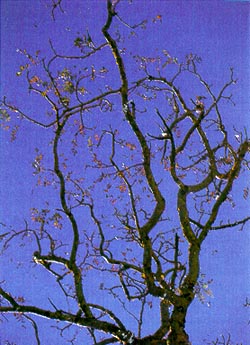
During the year so far Rs.2.86 crores has been released to 39 organizations in the states of Rajasthan, New Delhi, Gujarat, Orissa, Punjab, Haryana, West Bengal, Maharashtra, Uttar Pradesh Madhya Pradesh and Manipur. Some of the beneficiary organizations are Shri Bhagwan Mahavir Jain Gaushala Trust, Rajasthan, Circle of Animal Lovers, New Delhi, PFA, Ganjam, Orissa, PFA Sirohi, Rajasthan, PFA Haryana, Rohtak, Shri Gopal Gaushala Patran, Punjab, Bombay SPCA, Dushkal Gau Seva Samiti, Sumerpura, Rajasthan, Dayodaya Pashu Sansthan, Lalitpur, U.P., Akhil Bhartiya Maharishi Dayanand Gaushala, Rohtak, Dayodaya Pashu Seva Samiti, M.P., PFA, Ghaziabad, Shri Gurudev Parmarth Gaushala Trust Samithi, Ajmer, Rajasthan.
Scheme for Animal Birth Control and Immunization of Stray Dogs – The scheme is meant for controlling the population of stray dogs by sterilization and reducing incidences of Rabies by immunization. The NGOs and SPCAs working in collaboration with local bodies are eligible for this grant. The scheme has had the desired impact specially in large cities like, New Delhi, Mumbai, Ahmedabad, Panaji, Visakhapatnam, Pune, Kolkata, Chennai, Bangalore and Hyderabad and there has been a perceptible improvement in controlling the dog population.
During the year, an amount of Rs.1.30 crore has been released to 49 organisations in the states of Punjab, Karnataka, Goa, New Delhi, Rajasthan, Gujarat, Andhra Pradesh, West Bengal, U.P., Maharashtra, Tamil Nadu, Orissa, Assam and Arunachal Pradesh. Some organizations given grant under this schemes are Circle of Animal Lovers, New Delhi, Sanjay Gandhi Animal Care Centre, New Delhi, Fiendicoes SECA, New Delhi, Visakha SPCA, Visakhapatnam, Blue Cross Society of Pune, Blue Cross of India, Chennai, SPCA, Chennai, SPCA and PFA Kolkata. So far during the current year around 30,000 dogs have been covered under this programme.
Scheme for Provision of Ambulance Services to Animals in Distress – Under this scheme the animal welfare organization are given grant for purchase of suitable vehicle for transportation, rescue and also for providing emergency services to animals in distressed.
An amount of Rs.44.00 lakh has been released to organizations like Early Birds, Assam, PFA, Imphal, Gram Vikas Kalyan Samiti, Mathura, Shri Krishna Gau Seva Sansthan, Rajasthan, International Wildlife & Tiger Conservation, Jabalpur, PFA Sadhrana, (Gurgaon), Haryana, Circle of Animal Lvers, Sri Gurudev Parmarth Gaushala Trust, Ajmer and Pashupati Kalyan Parishad.
Scheme for Relief to Animals during Natural Calamities and Unforeseen Circumstances – The animal welfare organizations, State Government, Local Bodies etc. are given grant to make available emergency services to animals in distressed on account of Natural Calamities like earthquakes, cyclone, flood, drought etc.
During this financial year the target set by the Division is for giving grant of Rs.45 lakhs. Till date five states through organizations like MP Livestock & Poultry Development Corporation Ltd., (Rs.6.50 lakh), Rajasthan Livestock Development Board (Rs.10 lakh), U.P. Gauseva Aayog, Lucknow (Rs.7.50 lakh), Punjab Livestock Development Board, Punjab (Rs.10 lakh) and State SPCA, Orissa (Rs.7.50 lakh) have been given grant totaling to Rs.20.75 lakhs under Natural Calamity Scheme by way of 1st installment.
The first National Seminar on "The Status of Animal Houses in India" was organized in June, 2002 in which more than 350 delegates participated. As an outcome of the Seminar, the following three Sub-Committees were formed.
- Committee on Alternatives and Harmonisation with Global Guidelines on Alternatives.
- Committee on Norms of Rehabilitation of Animals used in Experimentation
- Committee on Accreditation of Laboratories.
A workshop for training the office-bearers of Societies for Prevention of Cruelty to Animals and other selected Animal Welfare Organisations (AWOs) in state of U.P., was held in Lucknow in the month of December, 2002. The workshop was chaired by the State Minister for Animal Husbandry and Dairy Development, U.P. and Gauseva Aayog, U.P. The other prominent speaker was Smt. Maneka Gandhi, Member of Parliament. Among the key recommendation of the workshop are :
- To allot two-three acres of land in each district of SPCAs on a 30 year lease basis.
- To design the Shelter house and Dispensary at the State level for all SPCAs and to send it to Central Government.
- To send at least 14 proposals of Shelter Houses of SPCAs to Central Government.
- To make arrangements in the state budget for making the SPCAs functional.
- To constitute a State Animal Welfare Unit in the Department of Animal Husbandry of U.P.
- To constitute of State Animal Welfare Board.
- To ask U.P. Intermediate Board to prohibit the dissection of animals in the 11th and 12th class.
Two more such workshops one at Bhopal and one at Orissa are proposed to be held.
The regular publication of Newsletters of CPCSEA & AWBI have also been carried for dissemination of information.
National Institute of Animal Welfare (NIAW)
An Institute is being constructed at Ballabhgarh, District, Faridabad, Haryana for providing various courses on animal welfare. The Institute would also offer intensive specialized Diplomas in specific streams.
The National Institute of Animal Welfare, which would be functional during 2003, will work as a Teaching, Research and Extension Centre. It will impart teaching in disciplines like History of Animal Welfare Movement, Psychology of Animal Behaviour, Animal Diversity, Animal Laws, Animal Nursing, Animal Breeding, Zoo Management, Park Management, Aquatic Management, Animal Stress and Pain etc.
The Institute is at advanced stage of construction. One post of Director and 11 posts of Lecturers have been approved to begin with.
Statutory Bodies Animal Welfare Board of India (AWBI)
This is a statutory body under Section 4 of the Prevention of Cruelty to Animals Act 1960, with head quarter at Chennai. Its basic mandate is to advise the Government on animal welfare issues, and create awareness in animal welfare.
Animal Welfare Board of India (AWBI) gives financial assistance to eligible Animal Welfare Organisations for Shelter Houses, Model Gaushalas for setting up of Bio-Gas Plants, Famine/Drought Relief, Earthquake Relief etc. in various states. The grant of Rs.10 crores was received by AWBI from Ministry of Culture on the occasion of 2600 year celebrations of Tirthankara Mahavir for distributing to Animal Welfare Organisations (AWOs) for the purpose of improving the facilities for shelter to needy animals and birds, alleviating the misery of animals and birds during any kind of disaster, providing medical facilities to animals and birds, and for creating necessary infrastructure for welfare and care of animals and birds etc. An amount of Rs.8.03 crores has been released.
The number of Animal Welfare Organisations (AWOs) registered with AWBI went up to 1800 from 1578 during the year.
A provision of Rs.4.65 crores under plan scheme and 53 lakhs under non-plan scheme has been made in the budget estimate for Animal Welfare Board of India. Out of this an amount of Rs.4.43 crores under plan scheme and 53.00 lakh under non-plan scheme have already been released.
So far State Animal Welfare Boards (SAWBs) have been constituted in 24 States/UTs.
Committee for Purpose of Control & Supervision of Experiments on Animals (CPCSEA)
This is also a statutory body under Section 15 of Prevention of Cruelty to animals Act, 1960 with head quarter at Chennai. The mandate of this Committee is to register and monitor the animal breeders and institutions conducting experiments on animals. So far 731 units have been registered with this committee.
This first National Seminar on "The Status of Animal Houses in India" was organized in June, 2002 in which more than 350 delegates participated. Five zonal workshops have been conducted by CPCSEA during current financial year. 175 new Institutions have been registered with CPCSEA during the current year.
A provision of Rs. 45 lakhs was made in the current year’s Budget and the entire amount has been released.
Workshops and International Conference
The Committee has conducted six zonal workshops on "Laboratory Animal Science and Welfare" during the year 2002-2003 for Veterinarians, Biologists, Scientists and Technicians working in CPCSEA, registered Animal failities region-wise. An International conference on Alternatives to the use of Animals in Research & Education was orgainsed by the Committe alongwith Department of Biotechnology.
Project Tiger has been under implementation since 1973 as a Centrally Sponsored Scheme of Government of India.
The main objective of the scheme is to ensure a viable population of tiger in India for scientific, economic, aesthetic, cultural and ecological values and to preserve areas of biological importance as natural heritage for the benefit, education and enjoyment of the people. Main objectives under the scheme include Wildlife management and protection measures.
Initially, the Project started with nine tiger reserves, covering an area of 16,339 sq.km. with a population of 268 tigers. And at present there are 27 tiger reserves covering an area of 37,761 sq.km. with a population of 1498 tigers. This amounts to almost 1.14% of the total geographical area of the country. Details of various Tiger Reserves alongwith their location and area are given in Table-4. The selection of reserves was guided by representation of ecotypical wilderness areas across the biogeographic range of tiger distribution in the country. Project Tiger is undisputedly a custodian of major gene pool in the country. It is also a repository of some of the most valuable ecosystem and habitats for wildlife.
The Tiger Reserves are constituted on a ‘core-buffer strategy’. The core area is kept free of biotic disturbances and forestry operations, where collection of minor forest produce, grazing, human disturbances are not allowed within. However, the buffer zone is managed as a ‘multiple use area’ with twin objectives of providing habitat supplement to the spill over population of wild animals from the core conservation unit, and to provide site specific ecodevelopmental inputs to surrounding villages for relieving the impact on the core. No relocation is visualized in the buffer area, and forestry operations, Non-Timber Forest Produce (NTFP) collection and other rights and concessions to the indigenous communities are permitted in a regulated manner to complement the initiatives in the core unit.
Project Tiger has put the tiger on an assured course of recovery from the brink of extinction, and has resurrected the floral and faunal genetic diversity in some of our unique and endangered wilderness ecosystem. The population of tigers in the country has increased significantly to about 4000 from less than 2000 at the time of launch of the project.
The effective protection and concerted conservation measures inside the reserves have brought about considerable intangible achievements also, viz. arresting erosion, enrichment of water regime and thereby improving the water table and overall habitat resurrection. Labour Intensive activities in tiger reserves have helped in poverty alleviation of the most backward sections and their dependence on forests has also reduced. The project has been instrumental in mustering local support for conservation programme in general.
- Elimination of all forms of human exploitation and disturbance from the core and rationalization of such activities in the buffer.
- Limitation of the habitat management to repair damage done by man.
- Researching facts about habitat and wild animals and carefully monitoring changes in flora and fauna.
There has not been any major problem in release of the budget outlay in the last three years under the scheme. However, actual utilisation of funds has been affected due to delay in release of funds by the State Government to the field units. This matter has been discussed in the Steering Committee of the Project Tiger meeting held on 8.5.2000. On the part of this Ministry, it has been decided to release the first installment of Central assistance without waiting for the submission of UCs. However the second installment is released only after obtaining UCs.

Table-4 Name of the Tiger Reserves in Tiger Range States with year of Creation and Area
Sl. Year of Name of Tiger Reserve State Total Area No. Creation in Sq. Kms.
1. 1973-74 Bandipur Karnataka 866 1999-2000 Nagarhole (extension) 643 2 1973-74 Corbett Uttar Pradesh 1316 3 1973-74 Kanha Madhya Pradesh 1945 4 1973-74 Manas Assam 2840 5 1973-74 Melghat Maharashtra 1677 6 1973-74 Palamau Bihar 1026 7 1973-74 Ranthambhore Rajasthan 1334 8 1973-74 Similipal Orissa 2750 9 1973-74 Sunderbans West Bengal 2585 10 1978-79 Periyar Kerala 777 11 1978-79 Sariska Rajasthan 866 12 1982-83 Buxa West Bengal 759 13 1982-83 Indravati Madhya Pradesh 2799 14 1982-83 Nagarjunsagar Andhra Pradesh 3568 15 1982-83 Namdapha Arunachal Pradesh 1985 16 1987-88 Dudhwa Uttar Pradesh 811 1999-2000 Katerniaghat-(extension) 551 17 1988-89 Kalakad- Mundanthurai Tamil Nadu 800 18 1989-90 Valmiki Bihar 840 19 1992-93 Pench Madhya Pradesh 758 20 1993-94 Tadoba-Andheri Maharashtra 620 21 1993-94 Bandhavgarh Madhya Pradesh 1162 22 1994-95 Panna Madhya Pradesh 542 23 1994-95 Dampha Mizoram 500 24 1998-99 Bhadra Karnataka 492 25 1998-99 Pench Maharashtra 257 26 1999-2000 Pakhui- Nameri Arunachal Pradesh-Assam 1206 27 1999-2000 Bori, Satpura, PanchmariMadhya Pradesh 1486
Total 37,761
In order to monitor the expenditure it is proposed to request the State Government to furnish, its allocation along with the financial and physical targets of Annual Plan of operations.
Plan Achievement of Project Tiger Division
During the IX Plan the budget outlay was substantially increased to Rs.75.00 crores from Rs.40.00 crores in the VIII Plan period. Project Allowance to an extent of Rs.3.95 crores to field level staff was also funded under this scheme for the first time.
During this Plan period, funds to an extent of Rs.2.49 crores has been released for creation of Strike Force to combat the growing insurgency and extremist situations within the Tiger Reserves.
During the Plan period four new Tiger Reserves were declared and the details are in Table-5.
Table-5 New Tiger Reserves
Sl. Tiger Reserve State Year of Area (sq.Kms) Funds No. Formation Released
1 Bhandra Karnataka 1998-99 492 318.459 2 Pench Maharashtra 1998-99 257 223.421 3 Pakui-Nameri Arunachal Pradesh/Assam 1999-2000 1206 93.100 4 Bori-Satpura Panchmarhi Madhya Pradesh 1999-2000 1486 75.220
3441 710.200
The effective protection and concerted conservation measures inside the reserves have brought about considerable intangible achievements also viz. arresting erosion, enrichment of water regime and thereby improving the water table and overall habitat resurrection. Labour intensive activities in tiger reserves have helped in poverty alleviation of the most backward sections and their dependence on forests has also reduced. The project has been instrumental in mustering local support for conservation programme in general.
During the X plan, it is envisaged to carry out on the Project with further imeptus on people’s support for conservation of nature and natural resources.
India Eco-development Project is being implemented in Seven Protected Areas in seven different States as an externally aided/Centrally Sponsored Plan Scheme under "Eco-development around Protected Areas including Tiger Reserves". It covers two National Parks and five Tiger Reserves. The main aim of the Project is to conserve bio-diversity through Eco-development, effective and extensive support for Eco-development and preparation of future Bio-diversity Projects. The project is being implemented in seven areas namely Buxa, Palamau, Nagarhole, Periyar, Pench, Ranthambore Tiger Reserves and Gir National Park.
An amount of Rs. 42.75 crores has been approved for States during the year and a sum of 15.60 crores, has been released till December, 2002.
Project Elephant was launched in February, 1992 to assist states having free ranging populations of wild elephants to ensure long term survival of identified viable populations of elephants in their natural habitats. The project is being implemented in 12 states, viz. Andhra Pradesh, Arunachal Pradesh, Assam, Jharkhand, Karnataka, Kerala, Meghalaya, Nagaland, Orissa, Tamilnadu, Uttaranchal and West Bengal. States are being given financial as well as technical assistance in achieving the objectives of the Project. Help is also provided to other states with small populations of elephants for the purpose of census, training of field staff and mitigation of human-elephant conflict.
Main Activities of Project Elephant
- Strengthening of measure for protection of wild elephants from poachers;
- Development of scientific and planned management for conservation of elephant habitats and viable population of wild Asiatic elephants in India;
- Ecological restoration of existing natural habitats and migratory routes of elephants;
- Promotion of measures for mitigation of man-elephant conflict in problem areas and moderating pressures of human and live stock on crucial elephant habitats;
- Eco-development;
- Veterinary care;
- Research on elephant issues relating to elephant conservation;
- Public education and awareness programme; and
- Capacity building of field staff, mahouts and veterinarians.
- An amount of Rs. 7.66 crores (Rs.2.28 crores for North-Eastern States) was released (till 31st December, 2002) to the elephant range states for the purpose of habitat management, mitigation of man-elephant conflict, payment of ex-gratia relief for loss of life human and crop caused by wild elephants, strengthening of anti-poaching measures, capacity building of the field staff, registration of domesticated elephants using microchips etc.
- Fourteen elephant reserves have been set up during the year (till December 2002) which include Singhbhum (Jharkhand); Garo Hills (Meghalaya); Mayurbhanj, Mahanadi and Sambalpur (Orissa); Eastern Dooars and Mayurjharna (West Bengal); Wayanad, Nilambur, Anamudy and Periyar (Kerala); Kameng (Arunachal Pradesh); Mysore (Karnataka) and Shiwalik (Uttaranchal).
- Training programmes for officers and field staff of elephant reserves were organised at Bandipur (Karnataka), Rajabhatkhawa (West Bengal), Kaziranga (Assam) and Dehradun (Uttaranchal).
- Arrangements for refresher courses for elephant veterinarians were made with the help of the Assam Agricultural University (Guwahati) and Kerala Agricultural University (Trichur).
- Elephant census was carried out in the States of Orissa, Jharkhand, Uttaranchal, Karnataka, Kerala, Tamilnadu and Andhra Pradesh.
The Wildlife Institute of India (WII) was established in 1982 under the Ministry of Agriculture and subsequently brought under the Ministry of Environment and Forests. The mandate of the Institute is to impart training, carry out research and advise on matter of conservation and management of wildlife. Wildlife Institute of India is an autonomous institute of the Ministry, with a 48 member WII Society headed by the Union Minister for Environment & Forests as the apex body. (The details of its research, education and training activities are given in Chapter seven and eight respectively).
Central Zoo Authority (CZA) was established in 1992 under the provisions of Wild Life (Protection) Act, 1972. The Authority consists of 10 members and one whole time Member Secretary and is chaired by the Minister, Environment and Forests, Government of India. Two committees namely ‘Administrative Committee’ under the Chairmanship of Director General of Forests and Technical Committee under the Chairmanship of Additional Director General of Forests (Wildlife) have been constituted for carrying out the functions of the Central Zoo Authority.
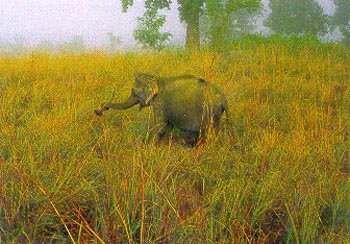
Main functions of the Central Zoo Authority are :
- Specify minimum standards for housing, upkeep and veterinary care of the animals in the zoos.
- Recognition of zoos on the basis of evaluation of their functioning.
- Identify endangered species of wild animals for the purpose of Captive Breeding and assigning responsibility in this regard to zoos.
- Coordinates the acquisition, exchange and loaning of animals for breeding.
- Provide technical and other assistance to zoos for management and development on scientific lines.
Details of activities performed by the Central Zoo Authority during the year are as follows :
Evaluation and Grant of Recognition of Zoos
Renewal of recognition to eight large zoos, four medium zoos and two small zoos, which were evaluated, have been granted. The list of zoos granted recognition are in Table-6.
Ten mini zoos were evaluated during this year. Out of these zoos, renewal of recognition, was granted to two mini zoos. Show cause notices were issued to three mini zoos for not fulfilling the stipulated conditions of recognition. Recognition has been refused to three mini zoos and the State govt. has been asked to close these zoos. Recognition to two zoos has been withheld.
The Central Zoo Authority has been pursuing with the State Governments for closing down derecognized zoos. As a result of this, 90 mini zoos and deer parks have been closed so far. Ministry has also written to Chief Ministers of Karnataka, Maharashtra, Uttar Pradesh, Orissa and West Bengal, the states which have the largest number (51) of functional derecognized zoos, to close the operation of such zoos.
Utilisation of grants-in-aid received from the Ministry
During the year the CZA has received Rs.1080 lakhs as Grants-in-Aid from the Ministry which has been utilised in following broad activities :-
|
Rs. In lakhs |
|
|
Operational cost of CZA |
59.44 |
|
Research Projects |
0.92 |
|
Training, workshops, conferences |
26.11 |
|
Construction of Rescue Centres |
13.42 |
|
Feeding and upkeep of rescued animals |
122.30 |
|
Grants for Development of Zoos |
857.81 |
|
Total |
1080.00 |
Grants to Zoos
Financial assistance of Rs.993.53 lakhs was released as Grant to Zoos for improvement of housing, veterinary care and upkeep facilities in the Zoos, creation of rescue centres in off the display areas of selected zoos, for rehabilitation of rescued animals and cost of feed and upkeep of rescued animals kept in rescue centres as under :-
|
Rs. In lakhs |
|
|
Improvement of Animal Housings in the Zoos |
437.63 |
|
Improvement of Veterinary Health Care facilities in the Zoos |
144.09 |
|
Other Developmental Works in the Zoos |
225.71 |
|
Rehabilitation of Circus Animals in Rescue Centres |
186.10 |
|
Total |
993.53 |
Ministry has assigned the responsibility to Central Zoo Authority for creation of rescue centres, for rehabilitation of circus animals, consequent upon ban on performance of wild animals in Circuses. Five rescue centers were identified for creation at Chennai, Visakhapatnam, Tirupati, Bannerghatta (Bangalore) and Nahargarh (Jaipur). All the five rescue centers have already been established and are functional. A total of 179 lions, 33 tigers, 18 bears, 8 panthers, and 11 monkey have been rescued from circuses and are now being housed in these centres. The Central Zoo Authority has released Rs. 186.10 lakhs towards establishment of rescue centres and feeding and health care for these animals.
Table-6 Zoos granted recognition during the year
Sl. No. Large zoos Medium Zoos Small Zoos
1 Indira Gandhi Zoological Park, Jawaharlal Nehru Biological Park, Aurangabad Zoo Visakhapatnam Bokaro 2 Nehru Zoological Park, Hyderabad Bannerghatta Biological Park, Indore Zoo Bangalore 3 Arignar Anna Zoological Park, Chennai Snake Park, Guindy Chennai 4 Sri Chamarajendra Zoological Park, Children's Corner Zoo, Guindy Mysore 5 Kamla Nehru Zoological Park, Ahmedabad 6 Veermata Jijabhai Udyan Zoo, Mumbai 7 Sanjay Gandhi Biological Park, Patna 8 Kanpur Zoo
- A two-week capsule course on Endangered Species and Zoo Management for Zoo Supervisors/middle level zoo managers was organised at Van Vihar National Park, Bhopal during February, 2002 in collaboration with the WII. 25 participants attended it.
- Training programme for Zookeepers was organised in Nandankanan Biological Park, Bhubaneshwar, Kanpur Zoological Park, Kanpur, Kamla Nehru Zoological Park, Ahmedabad and Assam State Zoo, Guwahati. In all, 72 animal keepers were trained. Two keepers from King Mahendra Trust for Nature Conservation, Nepal participated in the training programme at Kanpur Zoo.
- Two Zoo officials participated in a three weeks course on "Conservation of Endangered Species" at Durrell Wildlife Conservation Trust, UK during July-August, 2002
- A training cum workshop for zoo and forest officials of North-East India on "Wildlife Rehabilitation and Chemical restraint" was organised by the Wildlife Trust of India from 27th February to 7th March, 2002, at Guwahati and Itanagar. A total of 91 participants attended the training cum workshop.
- A workshop on management of rare and endangered wild animals and neonatal care was organised by the Association of India Zoo and Wildlife Veterinarians in Thiruvananthapuram from April 25th to 27th, 2002.
- A workshop on captive breeding of Falcons was organised by the Forest Department of Rajasthan on 11th June, 2002, in Jaipur. A committee consisting of experts in the field of falcon conservation has been formed to develop a proposal for initiating a planned breeding programme for Falcons.
Empanelment of Consultant for Zoo designing
With a view to provide the zoos services of experienced zoo designers in the country, empanelment of consultants were made by the Central Zoo Authority. Now the zoos can avail the services of these empanelled consultant for preparation of layout plans and construction of animal enclosures.
Strengthening of disease diagnostic facilities in Universities/Colleges
Under the National Zoo Animal Health coordinated programme, four Universities/Colleges have been identified. These institutions will provide facilities to the zoos in their region for specialised disease diagnosis and help in regular monitoring of diseases infecting wild animals. These institutes are Orissa Veterinary College, Bhubaneshwar, Madras Veterinary College, Chennai; Sher-E Kashmir University of Agricultural Sciences and Technology, Jammu; Assam Veterinary College, Guwahati and Indian Veterinary Research Institute, Bareily. So far financial assistance worth Rs.100.14 lakhs has been released to these universities/colleges for strengthening of clinical and diagnostic facilities.
Laboratory for Conservation of Endangered Species (LaCONES)
The Centre for Cellular & Molecular Biology (CCMB), Hyderabad has taken up a Project "Laboratory for Conservation of Endangered Species". The Project is being financed by Department of Bio-Technology and Central Zoo Authority while the land for locating the Centre has been provided by the Government of Andhra Pradesh. The Central Zoo Authority and Department of Biotechnology are contributing a total of Rs.2.00 crores and Rs.40.00 lakhs respectively per year for a period of five years for the construction of the building. The Authority has since released Rs. 1.60 crores towards the establishment of the facility. The Hon’ble Minister of Environment & Forests/Chairman, CZA laid the foundation stone of the Laboratory on 16.9.2001. The construction work is progressing as per schedule.
Planned breeding of endangered species & maintenance of Stud Books
- A planned breeding programme for lion tailed macaque in Indian Zoos has been initiated. The Director, Arignar Anna Zoological Park is the coordinator for this programme. Scientists from Mysore University and Salim Ali Centre for Ornithology and Natural History (SACON) have also been involved in the programme. The programme aims at building up a viable population of lion tailed macaque in Indian Zoos. The Central Zoo Authority will be providing financial assistance for this programme.
- As part of maintaining proper records for endangered species of pheasants in Indian zoos, the Central Zoo Authority in collaboration with the World Pheasant Association has initiated a programme for closed ringing of Pheasants.
- The Wildlife Institute of India with financial assistance of the Central Zoo Authority compiled Stud Book for five endangered species namely Bengal Tiger, Asiatic Lion, horned Rhino, Lion Tailed Macaque and golden Langur. These Stud Books are being updated by the Insititute.
- In order to bring transparency in working of zoos and management of the animal collections, the Central Zoo Authority published the inventory of the animals for the year 1999-2000, 2000-2001 & 2001-2002.
- A book on "Zoos of India" written by Dr. J. H. Desai was published by the Central Zoo Authority
- The Central Zoo Authority provided financial assistance for publication of the Edited version of "Management of Elephants in Captivity" by A.J.W. Milroy.
- The Central Zoo Authority provided support to the Association of Indian Zoos and Wildlife Veterinarians for bringing out the first volume of Indian Wildlife Year Book.
Website of Central Zoo Authority
An interactive website of the Central Zoo Authority (www.cza.nic.in) has been prepared and hosted. The complete inventory of animals of all the large, medium and small zoos are in the website. Zoos can now access their respective inventory and enter death, birth and other details directly.
National Zoological Park, New Delhi was inaugurated on 1st November, 1959, with an aim to provide healthy yet cheap recreation to masses. The zoo is presently spread in an area of 176 acres and houses 1257 animals of 130 species. In the changed scenario of wildlife conservation, National Zoological Park, just like any other zoo is playing a major role in ex-situ conservation. The mission of National Zoological Park is to foster understanding, knowledge and appreciation for wildlife through education, research and caring of animals in simulated conditions.
In this efforts to reach nearer to the achievement of its goal, the following activities were taken up during the year:
- African Elephant enclosure, tender for which was finalised last year, is in the making and more than 50% task is completed.
- The New Chimpanzee enclosure is complete and animals are going to be released into it shortly.
- The work of expansion of already existing White tiger enclosure has begun.
- Centre for Environmental Education has been asked to prepare detailed plans for exhibit gallery at the Reptile House.
- Water Recycling Plant has been installed at Lion Tailed Macaque enclosure to recycle the moat water on an experimental basis.
- Saplings of many plants species were planted both inside and outside the enclosure to improve aesthetics.
- Three new species of reptiles viz. Siamese Crocodile, Alligator and Spectacled Caiman have been put on display.
- During the year 1 : 0 Himalayan Black Bear, 1 : 1 Black Swan, 2 : 2 Ring Necked Pheasants, 1 : 2 Japanese Green Pheasants, 2 : 2 Spectacles Caiman, 2 : 2 Siamese Crocodile and 1 : 1 Aligators were received in exchange. Notable births during the year are: Black Buck-5, Chinkara-1, Chaushingha-1, Browantlered deer-10, Swamp deer-2, Sambar-5, Hog deer-5, Cockateil-5, Red Jungle Fowl-3, Silver Pheasant-6, and Blue & Yellow Macaw-1. 0 : 1 Hippopotamus, 1 : 0 Sloth Bear, and 1 : 0 Red Lechwe succumbed to death this year.
- An Assistant Keeper, while cleaning the Bear’s cage in the hospital was severely injured by the Bear. He was immediately hospitalised and is now recovering.
- The animals were provided desert coolers, agronet etc., to keep cool in summers. Special dietary supplements were given to animals to overcome loss of salts during this season.
- To protect the animal from harsh winter of Delhi, heaters were provided in big cat enclosures, hay and bamboo baskets with warm clothes were provided for snakes.
- A number of programme were organised to create awareness among the visitors. An orientation programme was organised for school teachers. On the Spot Painting Competition, Amateur Photography Competition, special programmes for Bear, against wildlife trade and staff welfare were organised during the wildlife week.
- Sanitary Section continued to follow disinfection schedule for disinfection of animals houses, enclosures, moats and water bodies. Incinerator was maintained in working condition.
- Veterinary schedule continued to be followed strictly. Thus, periodically sample collection and screening was done. Zoo Health Committee continued to give advise and assistance in maintaining animals healthy.
- For the first time a 12½ years old lioness, Sitoo was operated for cataract in the zoo.
- Students were given internship training at National Zoological Park.
- Enrichment of almost all the birds’ enclosures was done by planting saplings and providing logs etc.